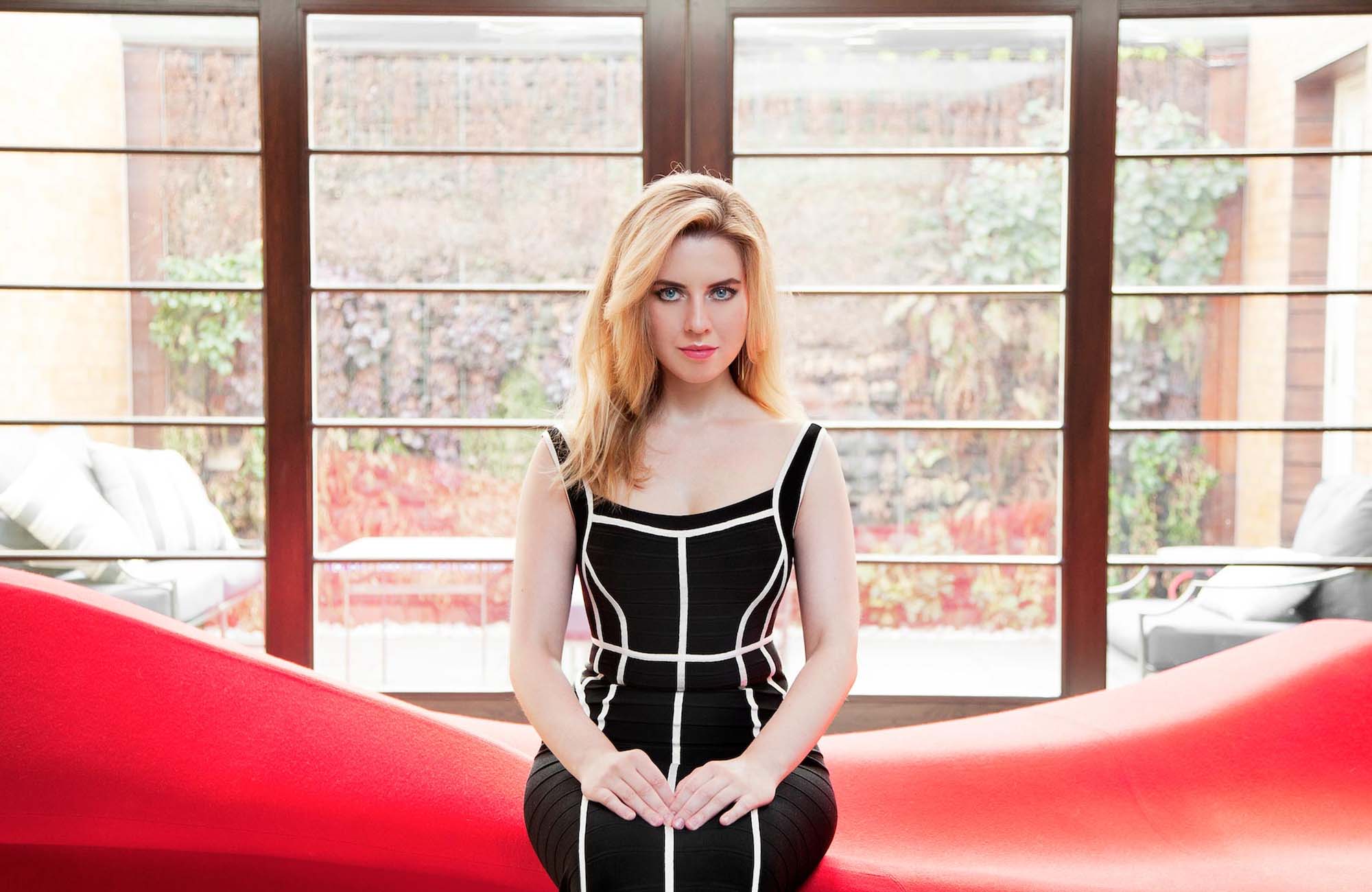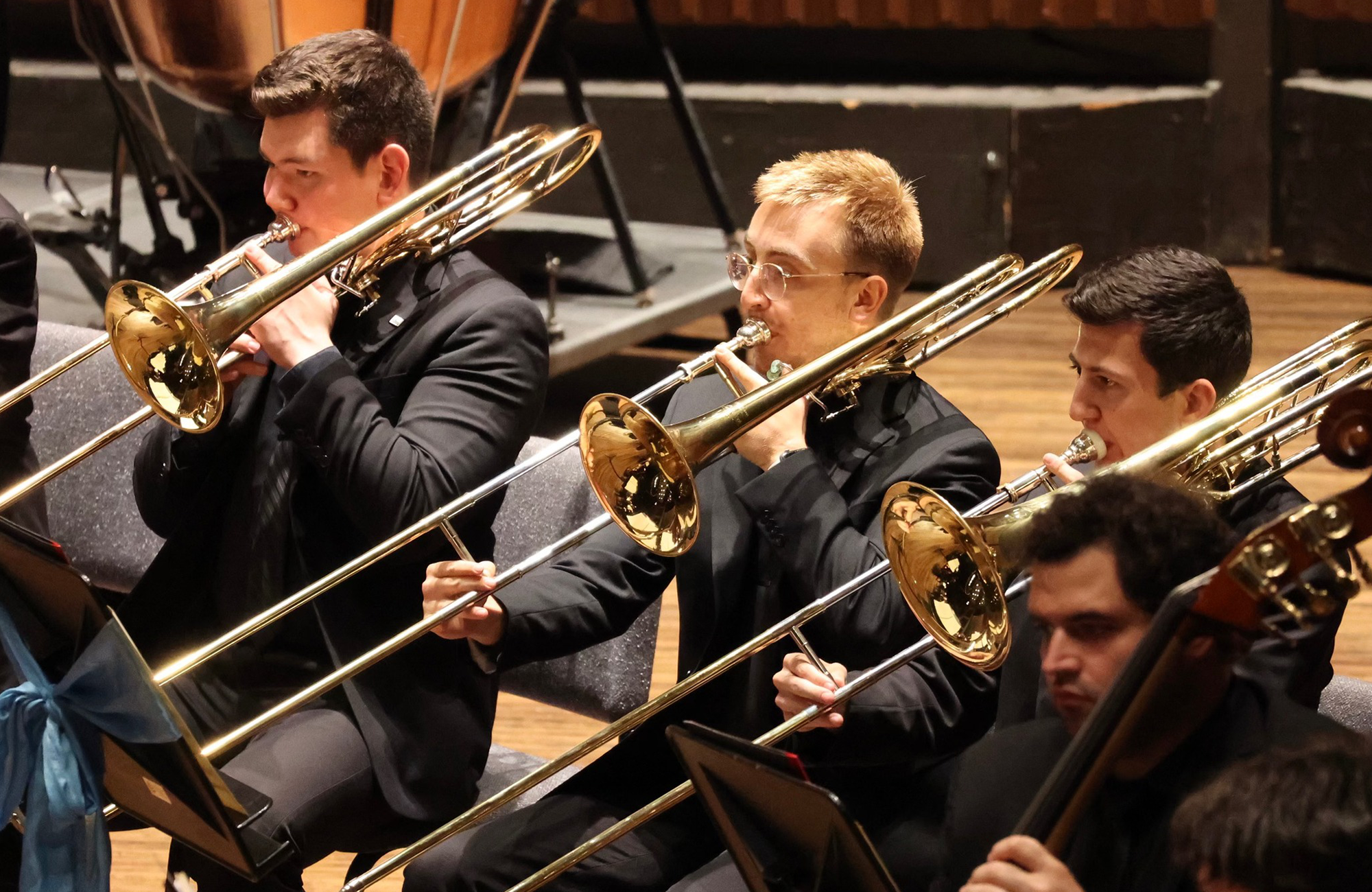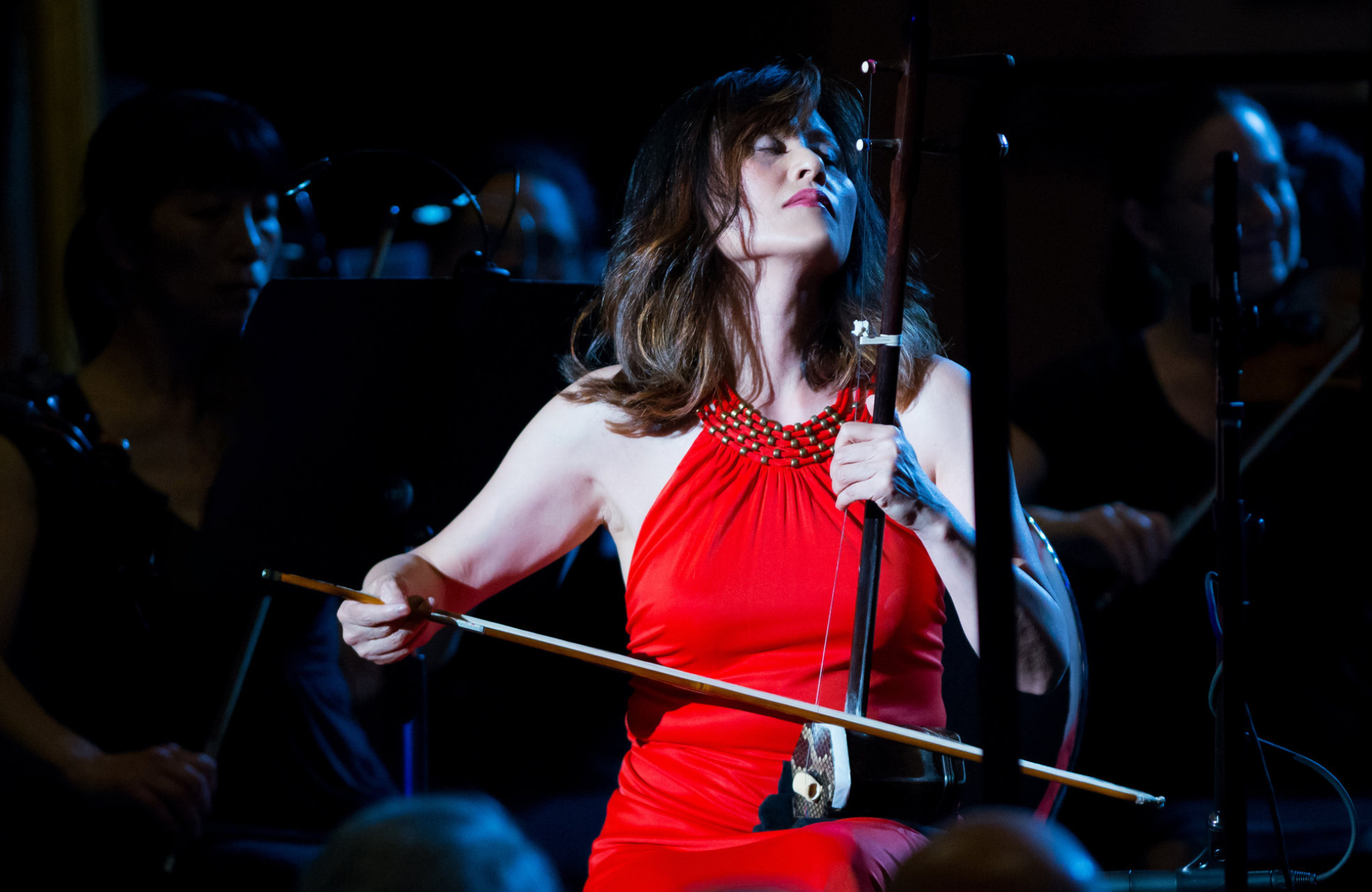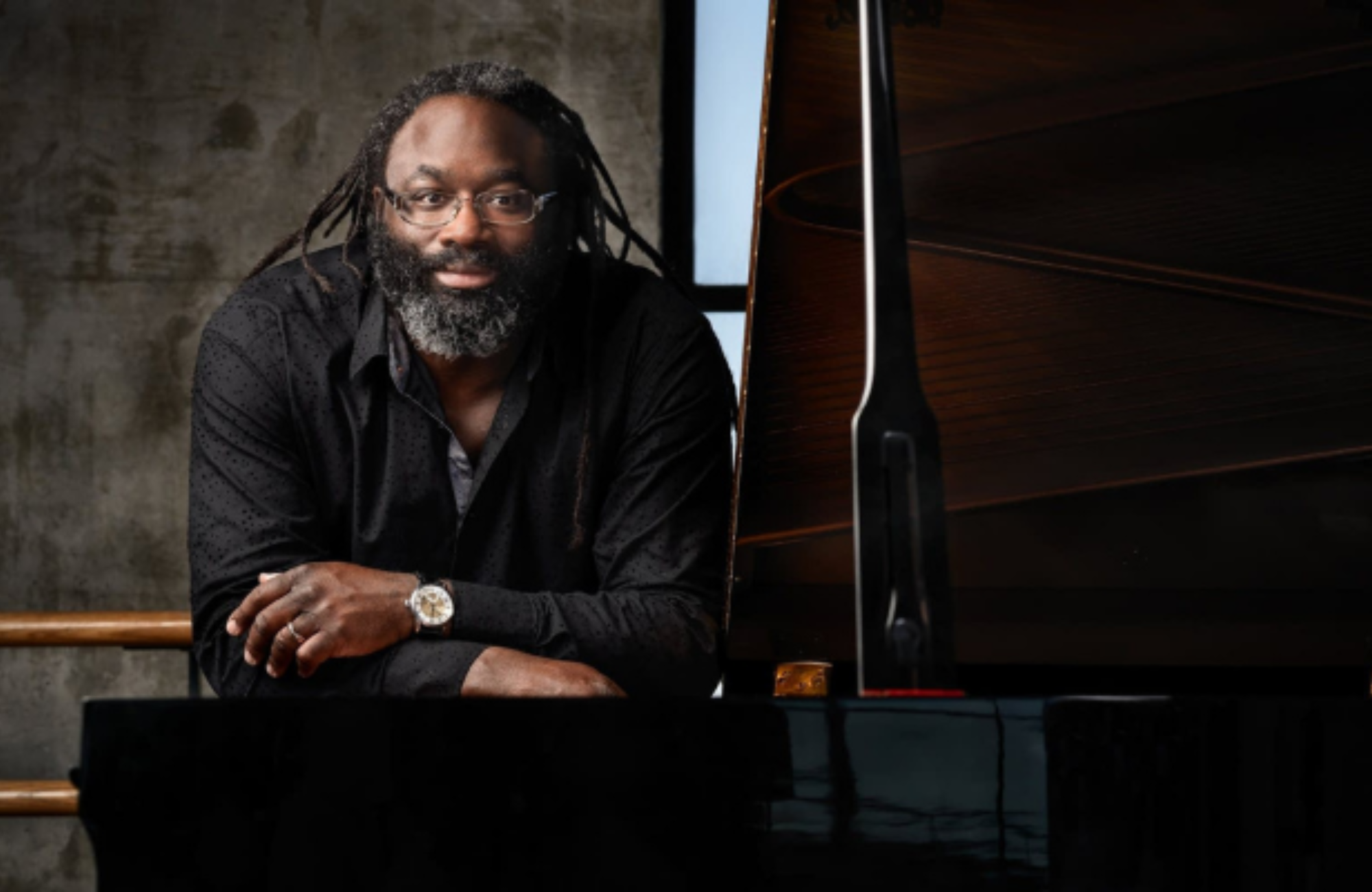Pianist Natasha Paremski toasts the New Year with two amazing works by George Gershwin: Rhapsody in Blue and his Second Rhapsody. You’ll remember Quinn Mason’s gorgeous music from the 2020-21 season, and you’ll love his Toast of the Town Overture. Aaron Jay Kernis’s poignant Elegy honors all who have suffered during the COVID crisis.
PROGRAM
QUINN MASON: Toast of the Town-Overture
GERSHWIN: Second Rhapsody ![]()
GERSHWIN: Rhapsody in Blue ![]()
KERNIS: Elegy (for those we lost) ![]()
STRAVINSKY: The Firebird: Suite (1919) ![]()
Symphoria is delighted to welcome Natasha Paremski back to Syracuse to perform two iconic Gershwin favorites. In case you missed her previous Syracuse performances, please get to know her playing through this performance of Third movement of Prokofiev’s Sonata No. 7.
PROGRAM NOTES
For our first Masterworks concert back in Crouse Hinds Hall, we’re offering a celebratory evening with a typically Symphoria mix of the familiar and the less familiar, a program that interleaves two favorite works with three others you might not know.
We start with a glass of champagne: the Toast of the Town (2016–2020) by Quinn Mason (b. 1996). You may remember his Reflection on a Memorial, a remembrance of victims of racial violence, premiered in Dallas by our conductor Larry Loh, and performed by Symphoria shortly thereafter. Toast of the Town is an entirely different sort of ...
For our first Masterworks concert back in Crouse Hinds Hall, we’re offering a celebratory evening with a typically Symphoria mix of the familiar and the less familiar, a program that interleaves two favorite works with three others you might not know.
We start with a glass of champagne: the Toast of the Town (2016–2020) by Quinn Mason (b. 1996). You may remember his Reflection on a Memorial, a remembrance of victims of racial violence, premiered in Dallas by our conductor Larry Loh, and performed by Symphoria shortly thereafter. Toast of the Town is an entirely different sort of piece—sparkling, rhythmically vital, and whimsical in spirit. The composer describes it as an “overture to an operetta that doesn’t exist”; and if it reminds you of Offenbach and Sir Arthur Sullivan, that’s just what he intended.
And we close with a burst of fireworks: music from the ballet The Firebird, composed in 1910 by Igor Stravinsky (1882–1971). The work was commissioned by Serge Diaghilev, impresario of the Ballets Russes. Stravinsky was not his first choice, but Diaghilev found himself in a pinch, having been turned down by several composers who were more prominent (or more prominent at the time). The risky move of turning to a relative unknown paid off. The Firebird launched Stravinsky’s career and went on to become his most frequently played score.
The story of the ballet mirrors that of Swan Lake. Prince Ivan stumbles on a group of princesses who have been enchanted by an evil sorcerer Kastchei. Ivan falls in love with one of them; with the help of a Firebird whose life he has spared, he hypnotizes the sorcerer’s followers, causing them to join in an “Infernal Dance” so energetic that they fall asleep. He then destroys Kastchei, rescues the captives, and is united with his beloved. The full ballet lasted about three-quarters of an hour, and called for lavish forces. Later, Stravinsky created three shorter suites—two calling for a leaner orchestra—to make the score more practical for concert performance. The second, from 1919, has been the most popular, and that’s what we hear tonight.
Besides its melodic richness, The Firebird is known for its rhythmic energy (especially in the “Infernal Dance”) and its superb orchestration. Two effects are particularly famous. Toward the very beginning, we can hear the luminous flash of the Firebird’s magic wings (technically, in harmonic glissandos on the strings); then, in the middle of the “Infernal Dance,” Stravinsky calls for trombone slides (a sound not in the original ballet—it was added in 1919).
At the center of the concert is the second of our favorites, the evergreen Rhapsody in Blue (1924) by George Gershwin (1898–1937), a work so thickly woven into American culture that even if you think you don’t know it, you’ll recognize it from its repeated use in soundtracks and commercials. It was originally commissioned by Paul Whiteman for an “experimental” concert aimed at bridging the gap between so-called classical and popular music. Gershwin was known at that time as a Tin Pan Alley songwriter, and Rhapsody in Blue was his first concert work. Given his inexperience with large-scale compositions of this sort (indeed, he left the orchestration to Ferde Grofé, who made three different versions), and given the speed of composition (a couple of weeks), you might reasonably expect a certain imperfection in the result. But if there are any perfect gems in the repertoire, Rhapsody in Blue is one of them. And while Gershwin went on to write several other concert works, including such staples as An American in Paris, none has the prominence of Rhapsody in Blue. As tonight’s soloist Natasha Paremski puts it, most Americans think of it as “the American Piano Concerto, the American Tchaikovsky First”—a doubly apt comparison, since not only are both works super-popular, but both reveal a melodic genius that few others can match.
“Everyone knows” Rhapsody in Blue. Not everyone knows, however, that Gershwin wrote a sequel. Like many sequels, it failed to match the popularity of the original. Still, the Second Rhapsody (1931) has its own spirit, and some listeners prefer it to its predecessor. It’s often described as an expanded version of a sequence written for the 1931 film Delicious, during which Janet Gaynor, an newly arrived immigrant, wanders the threatening streets of night-time Manhattan. It may be the case, however, that the concert work was actually composed first. Gershwin briefly considered calling it Rhapsody in Rivets, a title that gives some idea of the music’s hard-edged, modernist energy, quite different from the luxuriousness of Rhapsody in Blue. Hard edged—but it wouldn’t be Gershwin without melodic glory. Halfway through there’s a succulent tune that stands with Gershwin’s best, one he often referred to as his “Brahms theme.”
Tonight, as is usually the case when the two rhapsodies are joined, we’ll be hearing them in reverse order, treating the Second, in Natasha’s words, as the “opening act” or “warm up” to its more familiar sibling. The two make very different demands on the pianist. In part, Natasha points out, that’s because Rhapsody in Blue is much more piano oriented—indeed, the Second was described at its world premiere as a work for “orchestra and piano.” In part, the different demands stem from their different relationships to the audience. “Most people don’t know the Second Rhapsody, so your challenge is to sell the piece. But most people do know the Blue, so your challenge is to bring a fresh approach so that people think, ‘I never heard it like that before.’” Of course, if you’ve heard Natasha play Prokofiev, Rachmaninoff, and Tchaikovsky with Symphoria in the past, you’ll know that she always offers a fresh approach. Still, the jazz elements in Rhapsody in Blue give her even more performance latitude than usual, more “freedom of not having the dogma of the score.”
How do Stravinsky and Gershwin fit together? The two rhapsodies are quintessentially New York (in fact, another title Gershwin considered for the Second Rhapsody was New York Rhapsody). They wouldn’t seem to have much in common with The Firebird, a profoundly Russian work, both in its plot and in its links to—even quotations of—Russian folk music. Certainly, Gershwin’s imagination doesn’t seem to have been fired by the music of Stravinsky in the same way that it was by that of Alban Berg (especially Wozzeck and the Lyric Suite). And while Gershwin and Stravinsky bumped into each other from time to time, their awkward meetings never led to the kind of friendship Gershwin had with his tennis-partner Arnold Schoenberg.
But perhaps the links are stronger than might first appear. After all, Gershwin was the child of Russian immigrants who, like Stravinsky, came from the St. Petersburg area. Then, too, conductor Serge Koussevitzky, who premiered the Second Rhapsody, seems to have intuited some Russian background—at least, when he performed it, he liked to place it in the context of Russian music. More significant, Gershwin himself seems to have recognized Russian roots in the Second Rhapsody, since in the film Delicious, the work is introduced as if it were a composition by one of the characters, a Russian musician named Sascha.
Natasha sees the Russian links, too. When she has performed Russian concertos with us in the past, she’s called attention to their connections to American jazz. When performing Gershwin—and remember, she called Rhapsody in Blue “the American Tchaikovsky First”—she points to an influence that moves in the opposite direction, “a Jewish Russian flavor that has been around for a while.” Indeed, she insists, the Russian influence is broader than that. “Russians of all religions—Jewish, Muslim, Christian— have a common rhythmic attitude,” she says—an attitude that links the Rhapsodies to Firebird, especially the “Infernal Dance.”
This is a celebratory concert, but we can’t forget the tears, and we couldn’t have a program without some moment of reflection on the pandemic. So after intermission, we offer the 2020 Elegy—For Those We Lost by Aaron Jay Kernis (b. 1960). Kernis himself caught Covid early on. Although it was a mild case, it was, even so, “one of the scariest experiences I ever had.” What really spurred the work, however, was less his own experience that his “empathy and concern” for families that could not be with their loved ones and for “the doctors, nurses, and other health-care professionals who worked so tirelessly to save those loved ones.” A profound meditation on grief, it takes off from a theme fittingly reminiscent of Elgar’s Enigma Variations, building to a heart-wrenchingly passionate climax before fading away.
Peter J. Rabinowitz
Have any comments or questions? Please write to me at prabinowitz@ExperienceSymphoria.org
FEATURED ARTISTS
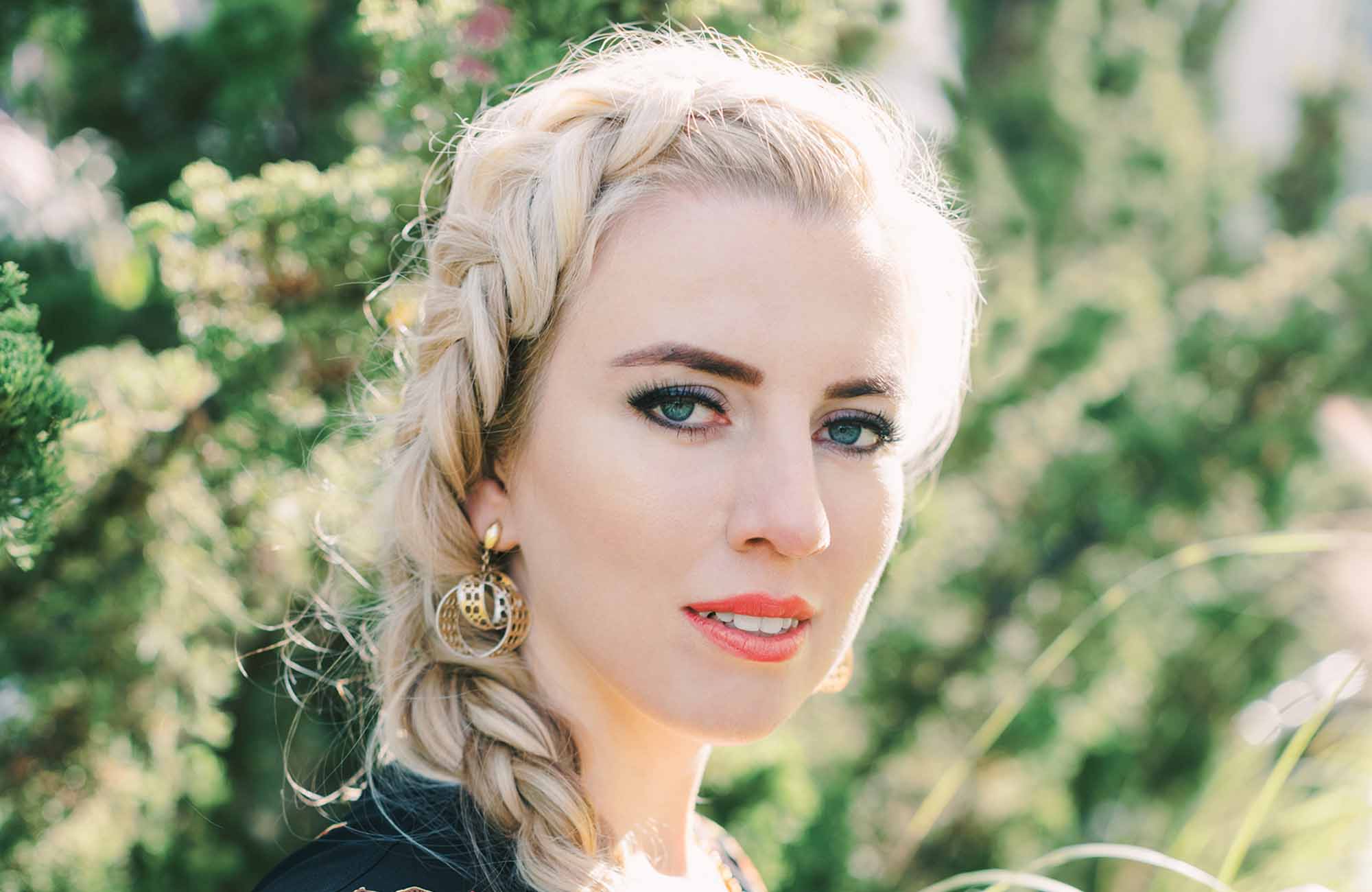
With her consistently striking and dynamic performances, pianist Natasha Paremski reveals astounding virtuosity and voracious interpretive abilities. She continues to generate excitement from all corners as she wins over audiences with her musical sensibility and powerful, flawless technique.
The 2018-19 season featured recitals in New York and ...
With her consistently striking and dynamic performances, pianist Natasha Paremski reveals astounding virtuosity and voracious interpretive abilities. She continues to generate excitement from all corners as she wins over audiences with her musical sensibility and powerful, flawless technique.
The 2018-19 season featured recitals in New York and Chicago in addition to concerto appearances in North America, Europe and South America. Her recording of Fred Hersch’s Variations on a Theme by Tchaikovsky – commissioned for her by the Gilmore Festival – was released in early 2019 on the Steinway & Sons label alongside Mussorgsky’s Pictures at an Exhibition. In 2019-20 she performs the Rachmaninoff cycle with Symphoria Syracuse, returns to Columbus Symphony, and will perform with the Knoxville, Jacksonville and Charleston Symphonies. She will also give a recital at Herbst Hall in San Francisco.
Natasha is a regular return guest of many major orchestras, including Minnesota Orchestra, San Francisco Symphony, Grant Park Festival, Winnipeg Symphony, Kitchener-Waterloo Symphony, Oregon Symphony, Elgin Symphony, Colorado Symphony, Buffalo Philharmonic, Virginia Symphony, and Royal Philharmonic Orchestra with whom she has performed every year since 2008 in venues such as Royal Albert Hall, Royal Festival Hall, and Cadogan Hall. She has performed with major orchestras in North America including Dallas Symphony Orchestra, Los Angeles Philharmonic Orchestra, San Diego Symphony, Toronto Symphony, Baltimore Symphony, Houston Symphony, NAC Orchestra in Ottawa, Nashville Symphony. She has toured extensively in Europe with such orchestras as Bournemouth Symphony Orchestra, Vienna’s Tonkünstler Orchester, Royal Scottish National Orchestra, Orchestre de Bretagne, the Orchestre de Nancy, Royal Liverpool Philharmonic Orchestra, Tonhalle Orchester in Zurich, Moscow Philharmonic, under the direction of conductors including Thomas Dausgaard, Peter Oundjian, Andres Orozco-Estrada, Jeffrey Kahane, James Gaffigan, JoAnn Falletta, Fabien Gabel, Rossen Milanov and Andrew Litton. In addition, she has toured with Gidon Kremer and the Kremerata Baltica in Latvia, Benelux, the United Kingdom and Austria as well as appearances with National Taiwan Symphony Orchestra in Taipei.
Natasha has given recitals at the Auditorium du Louvre in Paris, Wigmore Hall, Schloss Elmau, Mecklenburg-Vorpommern Festival, Verbier Festival, Seattle’s Meany Hall, Kansas City’s Harriman Jewell Series, Santa Fe’s Lensic Theater, Ludwigshafen BASF Series, Teatro Colon in Buenos Aires, Tokyo’s Musashino Performing Arts Center and on the Rising Stars Series of Gilmore and Ravinia Festivals.
A passionate chamber musician, Natasha is a regular recital partner of Grammy winning cellist Zuill Bailey, with whom she has recorded a number of CDs. Their Britten album on Telarc debuted at No. 1 on the Billboard Classical Chart, remaining there for a number of weeks, in addition to being featured on The New York Times Playlist. She has been a guest of many chamber music festivals such as Jeffrey Kahane’s Green Music Center ChamberFest, the Lockenhaus, Toronto, Sitka Summer Music, and Cape Cod Chamber Music festivals to name a few.
Natasha was awarded several prestigious prizes at a very young age, including the Gilmore Young Artists prize in 2006 at the age of eighteen, the Prix Montblanc in 2007, the Orpheum Stiftung Prize in Switzerland. In September 2010, she was awarded the Classical Recording Foundation’s Young Artist of the Year. Her first recital album was released in 2011 to great acclaim, topping the Billboard Classical Charts, and was re-released on the Steinway & Sons label in September 2016 featuring Islamey, recorded on Steinway’s revolutionary new Spirio technology. In 2012 she recorded Tchaikovsky’s Piano Concerto No. 1 and Rachmaninoff’s Paganini Rhapsody with Royal Philharmonic Orchestra and Fabien Gabel on the orchestra’s label distributed by Naxos.
With a strong focus on new music, Natasha’s growing repertoire reflects an artistic maturity beyond her years. In the 2010-11 season, she played the world premiere of a sonata written for her by Gabriel Kahane, which was also included in her solo album.
Natasha continues to extend her performance activity and range beyond the traditional concert hall. In December 2008, she was the featured pianist in choreographer Benjamin Millepied’s Danses Concertantes at New York’s Joyce Theater. She was featured in a major two-part film for BBC Television on the life and work of Tchaikovsky, shot on location in St. Petersburg, performing excerpts from Tchaikovsky’s First Piano Concerto and other works. In the winter of 2007, Natasha participated along with Simon Keenlyside in the filming of Twin Spirits, a project starring Sting and Trudie Styler that explores the music and writing of Robert and Clara Schumann, which was released on DVD. She has performed in the project live several times with the co-creators in New York and the U.K., directed by John Caird, the original director/adaptor of the musical Les Misérables.
Natasha began her piano studies at the age of four with Nina Malikova at Moscow’s Andreyev School of Music. She then studied at San Francisco Conservatory of Music before moving to New York to study with Pavlina Dokovska at Mannes College of Music, from which she graduated in 2007. Natasha made her professional debut at age nine with El Camino Youth Symphony in California. At the age of fifteen she debuted with Los Angeles Philharmonic and recorded two discs with Moscow Philharmonic Orchestra.
Born in Moscow, Natasha moved to the United States at the age of eight becoming a U.S. citizen shortly thereafter, and is now based in New York.

Described as bringing an “artisan storyteller’s sensitivity… shaping passages with clarity and power via beautifully sculpted dynamics… revealing orchestral character not seen or heard before” (Arts Knoxville) Lawrence Loh enjoys a dynamic career as a conductor of orchestras all over the world.
After an extensive two ...
Described as bringing an “artisan storyteller’s sensitivity… shaping passages with clarity and power via beautifully sculpted dynamics… revealing orchestral character not seen or heard before” (Arts Knoxville) Lawrence Loh enjoys a dynamic career as a conductor of orchestras all over the world.
After an extensive two year search, Lawrence Loh was recently named Music Director of the Waco Symphony Orchestra beginning in the Spring of 2024. Since 2015, he has served as Music Director of The Syracuse Orchestra (formerly called Symphoria), the successor to the Syracuse Symphony Orchestra. “The connection between the organization and its audience is one of the qualities that’s come to define Syracuse’s symphony as it wraps up its 10th season, a milestone that might have seemed impossible at the beginning,” (Syracuse.com) The Syracuse Orchestra and Lawrence Loh show that it is possible to create a “new, more sustainable artistic institution from the ground up.”
Appointed Assistant Conductor of the Pittsburgh Symphony in 2005, Mr Loh was quickly promoted to Associate and Resident Conductor within the first three years of working with the PSO. Always a favorite among Pittsburgh audiences, Loh returns frequently to his adopted city to conduct the PSO in a variety of concerts. Mr. Loh previously served as Music Director of the West Virginia Symphony Orchestra, Music Director of the Northeastern Pennsylvania Philharmonic, Artistic Director and Principal Conductor of the Syracuse Opera, Music Director of the Pittsburgh Youth Symphony Orchestra, Associate Conductor of the Dallas Symphony Orchestra, Associate Conductor of the Colorado Symphony Orchestra and Music Director of the Denver Young Artists Orchestra.
Mr. Loh’s recent guest conducting engagements include the San Francisco Symphony, Dallas Symphony, North Carolina Symphony, Baltimore Symphony, Sarasota Orchestra, Florida Orchestra, Pensacola Symphony, Atlanta Symphony, National Symphony, Detroit Symphony, San Diego Symphony, Seattle Symphony, National Symphony (D.C.), Utah Symphony, Rochester Philharmonic, Indianapolis Symphony, Calgary Philharmonic, Buffalo Philharmonic, Albany Symphony and the Cathedral Choral Society at the Washington National Cathedral. His summer appearances include the festivals of Grant Park, Boston University Tanglewood Institute, Tanglewood with the Boston Pops, Chautauqua, Sun Valley, Shippensburg, Bravo Vail Valley, the Kinhaven Music School and the Performing Arts Institute (PA).
As a self-described “Star Wars geek” and film music enthusiast, Loh has conducted numerous sold-out John Williams and film music tribute concerts. Part of his appeal is his ability to serve as both host and conductor. “It is his enthusiasm for Williams’ music and the films for which it was written that is Loh’s great strength in this program. A fan’s enthusiasm drives his performances in broad strokes and details and fills his speaking to the audience with irresistible appeal. He used no cue cards. One felt he could speak at filibuster length on Williams’ music.” (Pittsburgh Tribune)
Mr Loh has assisted John Williams on multiple occasions and has worked with a wide range of pops artists from Chris Botti and Ann Hampton Callaway to Jason Alexander and Idina Menzel. As one of the most requested conductors for conducting Films in Concert, Loh has led Black Panther, Star Wars (Episodes 4-6), Jaws, Nightmare Before Christmas, Jurassic Park, Casablanca, The Wizard of Oz and Singin’ in the Rain, among other film productions.
Lawrence Loh received his Artist Diploma in Orchestral Conducting from Yale, his Masters in Choral Conducting from Indiana University and his Bachelor of Arts from the University of Rochester. Lawrence Loh was born in southern California of Korean parentage and raised in Carlisle, Pennsylvania. He and his wife Jennifer have a son, Charlie, and a daughter, Hilary. Follow him on instagram @conductorlarryloh or Facebook at @lawrencelohconductor or visit his website, www.lawrenceloh.com


